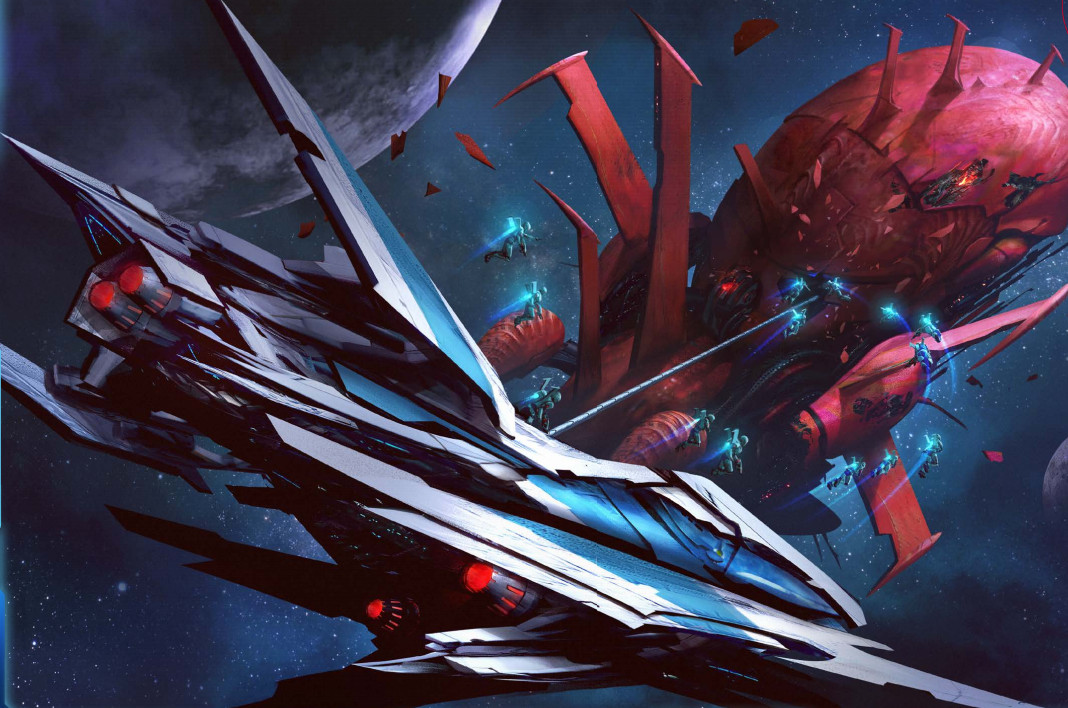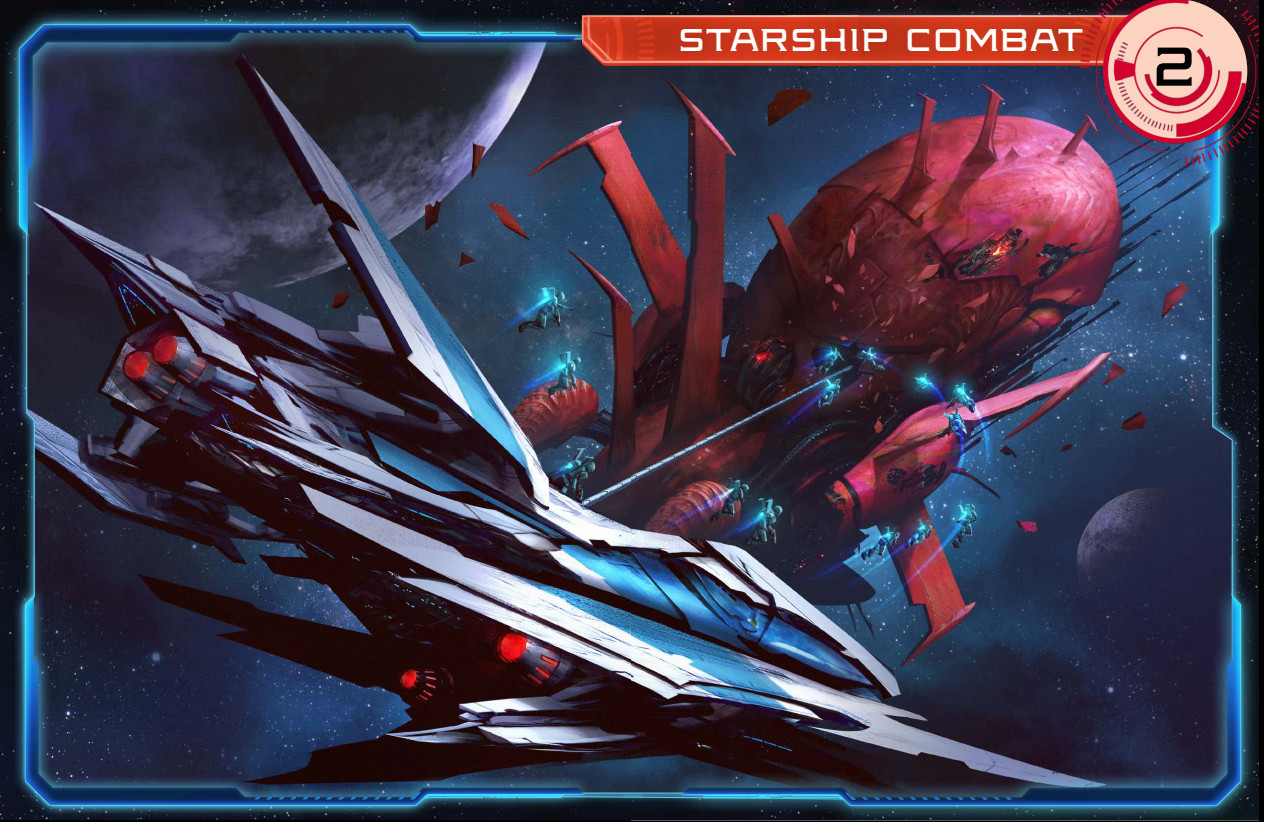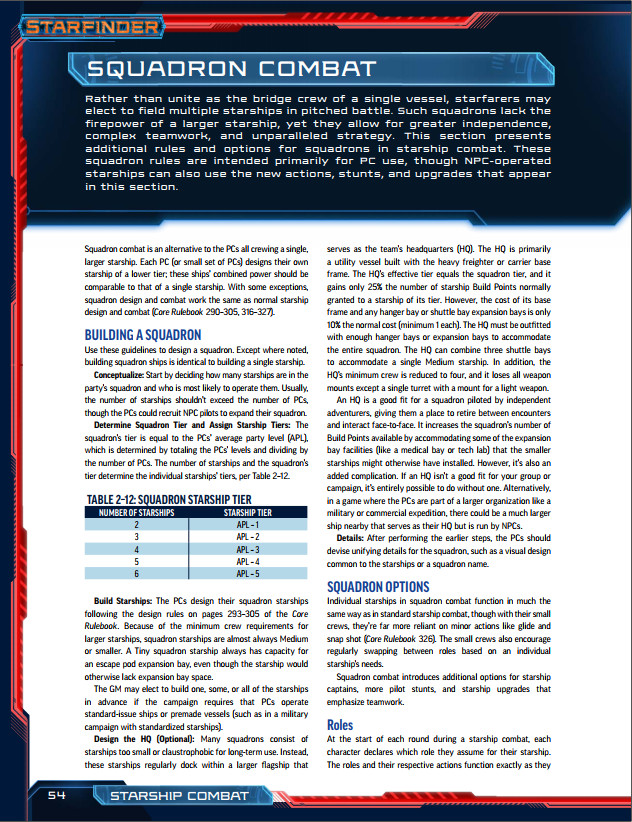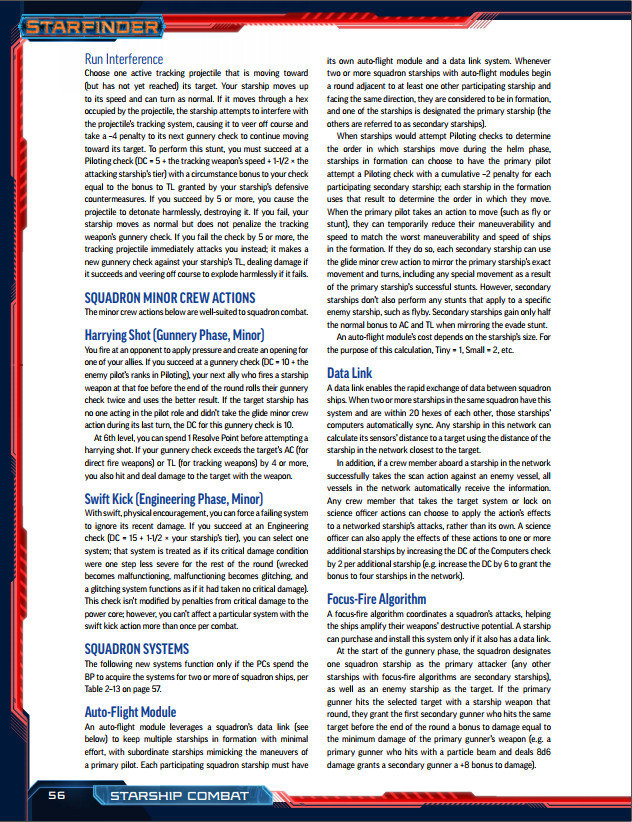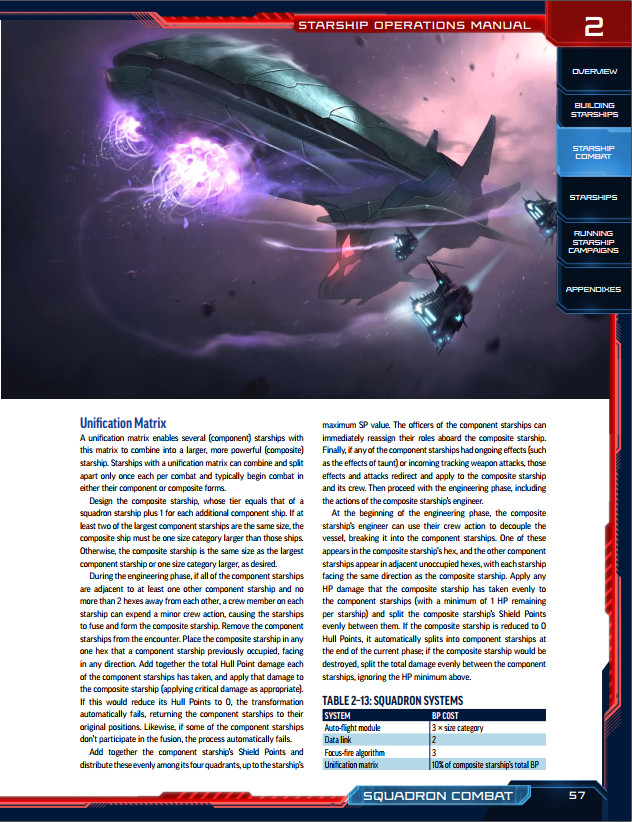So you want to fly your own ship, eh? Ok “hotshot,” show us what you’ve got.
The squadron rules are here!
Since the release of Starfinder, fans have been begging for the ability to fly their own stunt-fighters into starship combat, reliving those classic movie moments where squadrons of star-fighters engage each other in pew-pew battles above a forest moon. These rules let you do exactly that. Roll up your best combat ace, join your squad-mates, and launch into glorious dogfights.
Full disclosure: while I didn’t write these rules (that prestige belongs to the legendary Alex Augunas), I was one of the major contributors to the Starship Operations Manual and have known about these rules for over a year. That said, I’m so happy to see them in the wild and in your capable hands.
Building a Squadron
First off, I love how the rules don’t assume that every party member is going to be an ace pilot or that all parties have the same number of PCs. They simply give you adjustments from 2 to 6 starships for squadron combat. This lets you build solo fighters, some pilot-gunner two crew ships, ECM focused ships, bombers, you name it. I can certainly see a situation where a player’s character concept doesn’t perfectly match that star-fighter skill set, but they can ride shotgun to another pilot and fill the Magic Officer, Science Officer, or Chief Mate roll while still letting pilots shine in their intended roles. The rules are also set up to allow a standard party of 4 PCs each pilot their own star-fighter from level 1, which is super important.
You also have the option for an HQ ship, which is excellent. If you’ve got your squad of W-Wing stunt fighters flying around, there really isn’t room in that cramped cockpit for living quarters and a medical bay. The HQ ship allows a player controlled space for the squad to dock and have some great in-space RP moments between squadron combat. If the PCs don’t have this control, you can also have them dock on an NPC controlled carrier.
Squadron Options
This section really fleshes out all of the differences in rules and mechanics that you need to effectively run squadron based combat. Because the default rules assume that the default starship combat is 2 or 3 starships with full crews battling it out, we need some new rules to help adjust to this new paradigm. One adjustment is allowing a squad captain to fill the usual captain duties: hyping up your team and disparaging the other team. You’ve also got some new piloting stunts, perfect for solo fighters: escort, flank, and run interference. These moves allow multiple starships to work together to take down another vessel. While the BP adjustment from having multiple starships might make your ships feel weak, working together using these new stunts help you leverage the tactical advantages of having multiple vessels into tangible in-game rewards.
Some new minor crew actions have been introduced to help your solo-pilot vessels operate and deal with major damage or harrying shots to help set up a big attack from your heavier-hitting squad-mates. New options in this book also give you the ability to install a virtual intelligence into your starship to take care of some tasks for you, such as scanning enemy vessels or re-balancing shields.
New systems like the data link and, auto-flight module, and focus-fire algorithm help take your cooperative tactics to the next level by giving you further in-game benefits for working together and using your squad’s multiple ships as a benefit rather than a liability.
Finally, the Unification Matrix. When it’s time to form Watt-tron and kick some major galactic butt, you can use these rules to form-up into that one-big starship that’s an advantage for some types of starship combat.
Impressions
I love the potential these rules have for telling new types of stories with Starfinder. From a mechanical standpoint, they allow for individual creativity with starship creation and don’t put the task on one or two players or giving the GM one more job to do. As someone who loves to create and customize her vehicles, the idea of building my own starship is fantastic, especially with all of the new weapons in this book.
One thing that does worry me is the significantly lower BP budget these ships have and the lower hull points and shields they’re likely to have due to the lower tier and smaller sized ships. This makes for some very fragile starfighters, so working together and playing defensively become even more important. These rules are certainly focused on those who fully love and understand the tactics involved in starship combat and are ready to take on new challenges.
Another thing to work on streamlining (and maybe using some initiative software for) is rolling piloting rolls for multiple ships every single round. When there are 2 starships on the battlefield it’s not a big deal, but when there are 8+ as two squadrons collide, that can significantly slow down combat.
My advice? Coordinate your starship’s designs, coordinate your tactics, fight like a squad. Teamwork is the key to success while engaging in squadron combat. Get an initiative program on a smartphone or in your VTT. Let it roll piloting phase initiative for you so you can quickly get back to the action.

